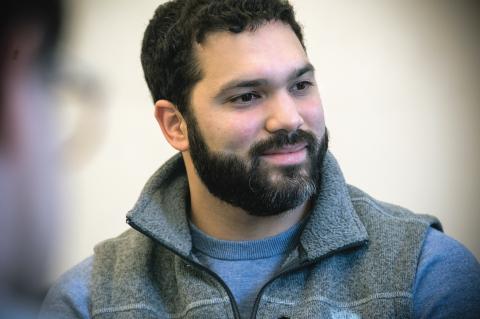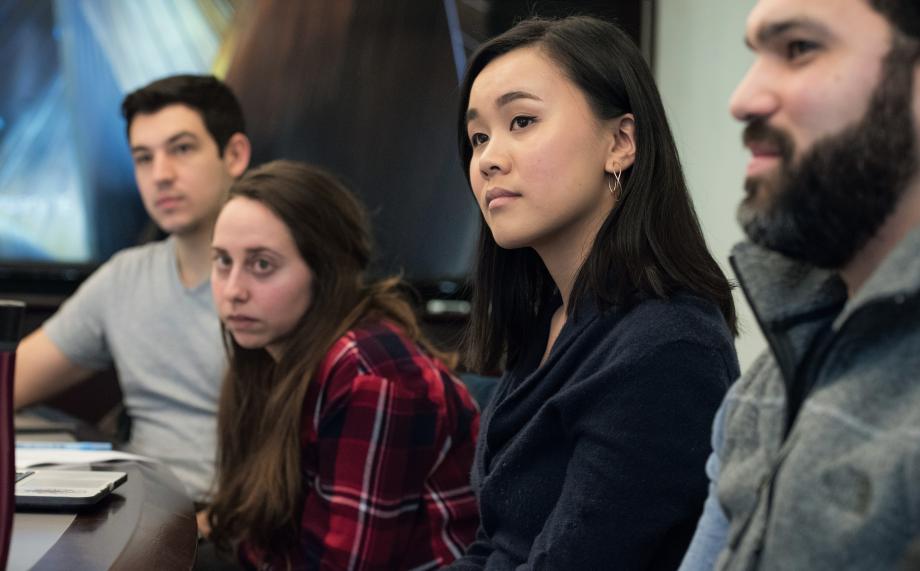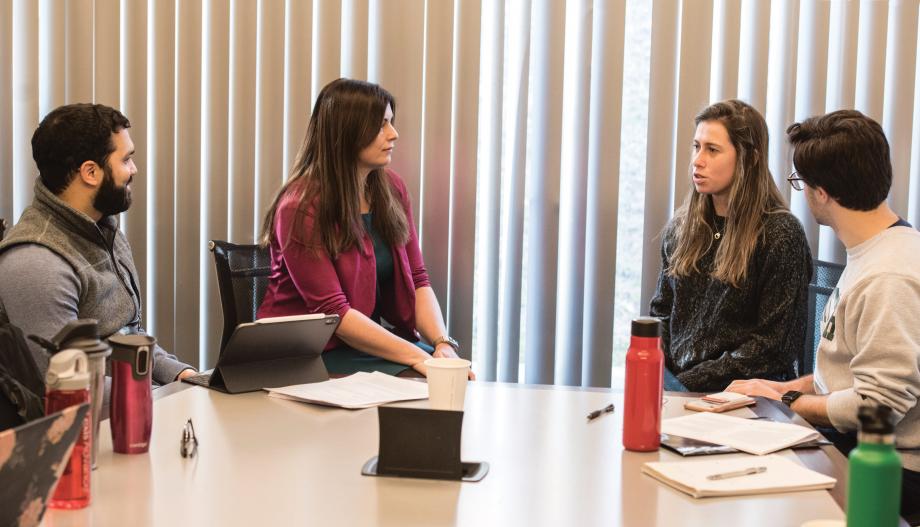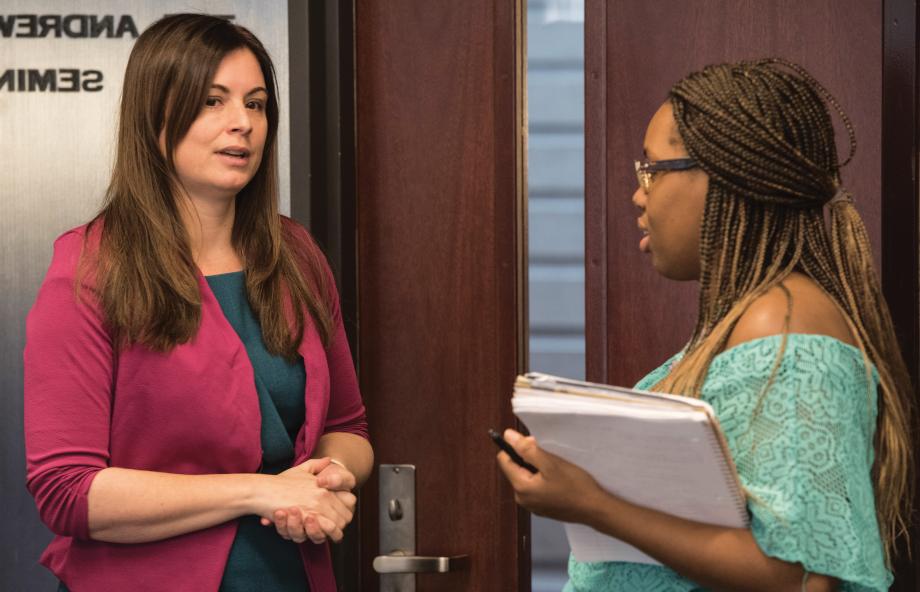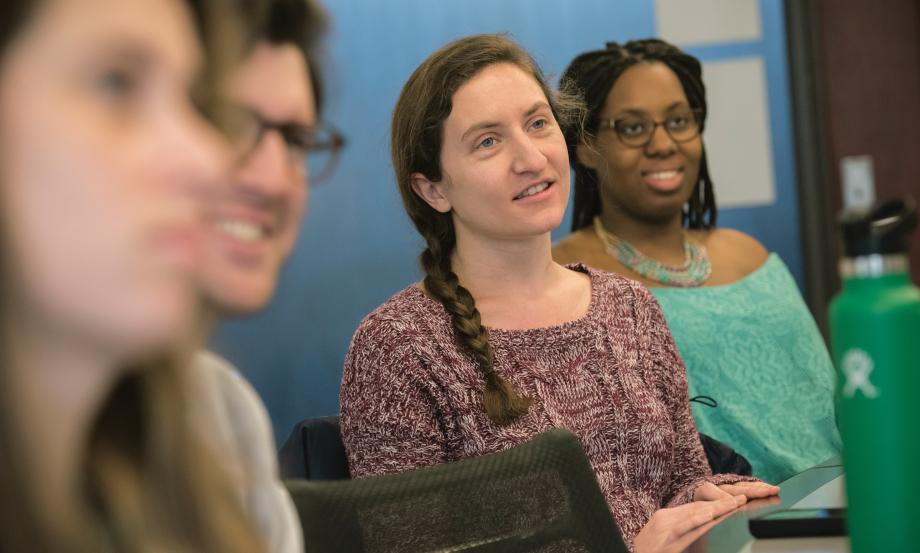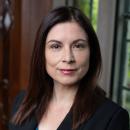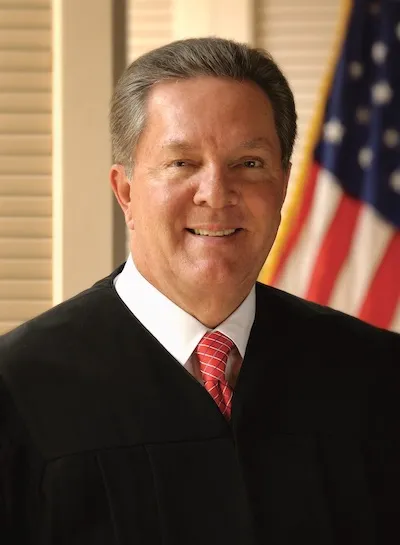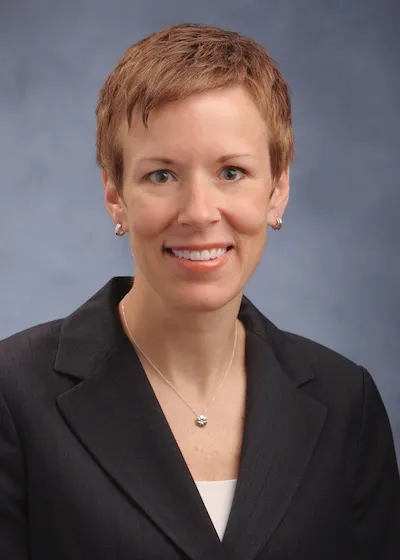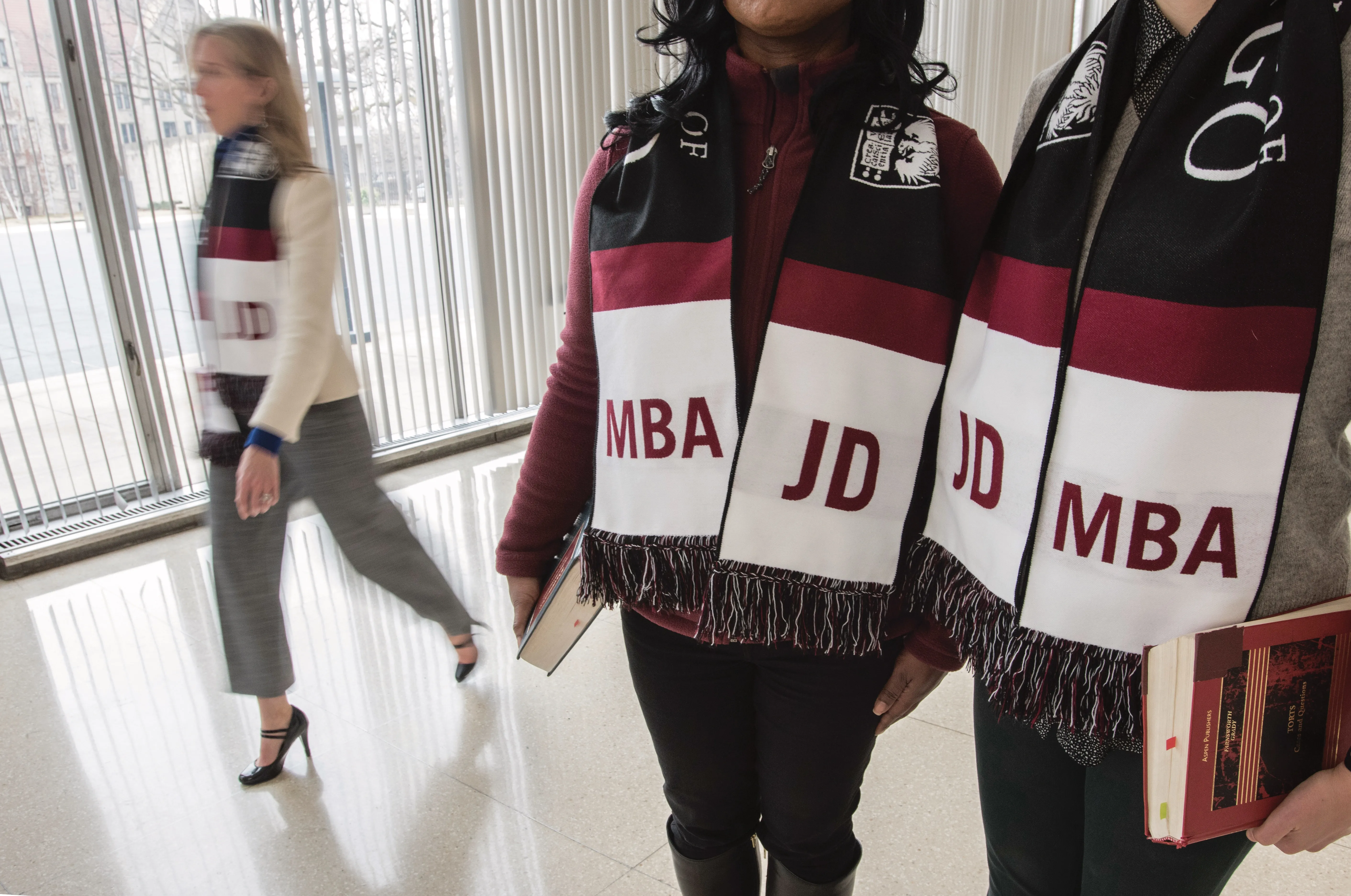Promise and Possibility
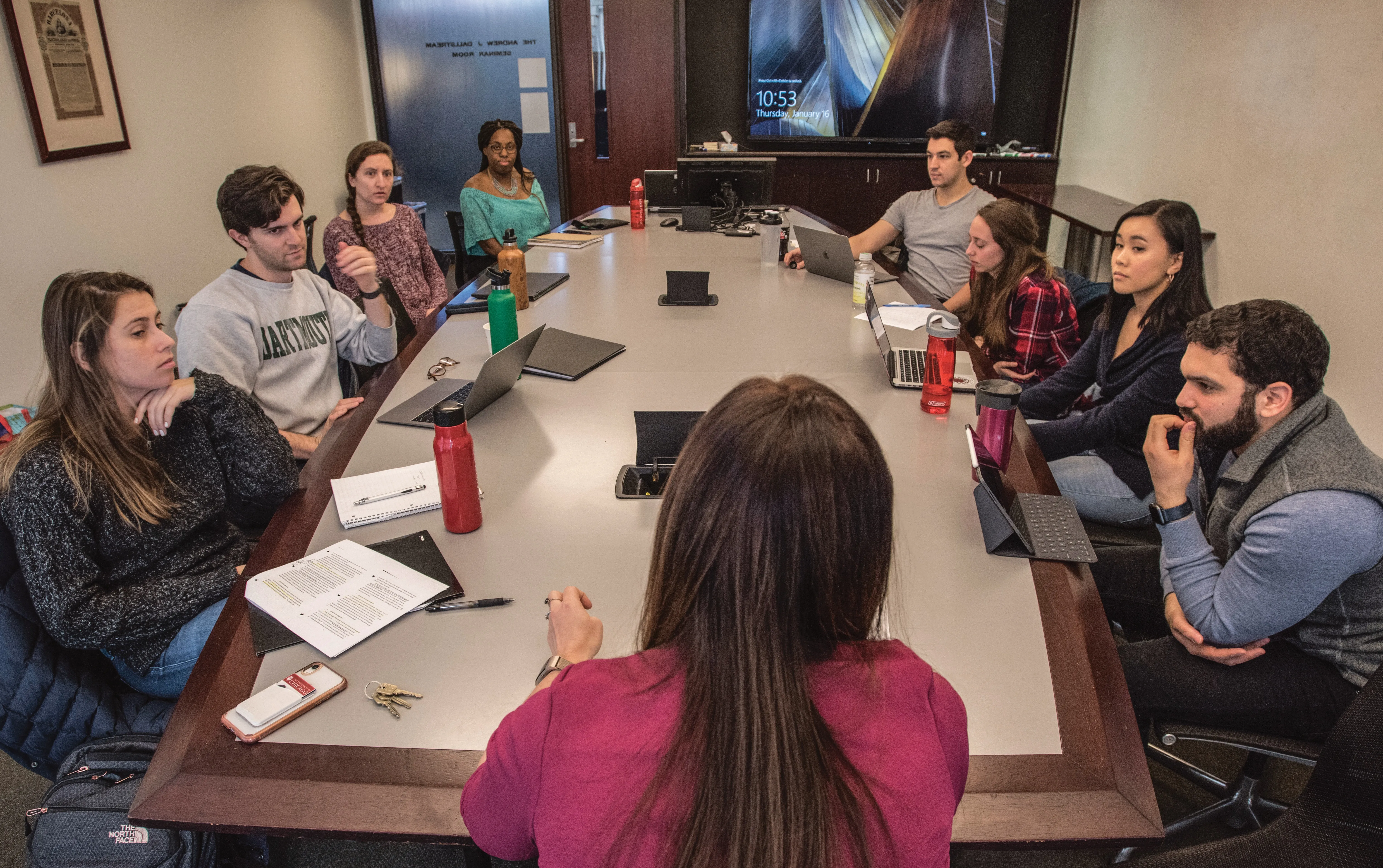
When Victor Cedeño, ’21, heard last fall that the Law School was set to launch a new Immigrants’ Rights Clinic—a combination of litigation and policy work led by a rising star in the field—he knew he wanted in.
He didn’t yet know the director, Nicole Hallett, a Yale Law School graduate and former Skadden Fellow who founded two clinics at the University of Buffalo School of Law before joining UChicago’s clinical legal faculty in January 2020. But he did remember what it felt like to be 12 years old, living in a new country, wondering whether he’d ever learn to speak English.
“I know what it’s like to not yet have your status settled, to feel as though your fate is in other people’s hands,” said Cedeño, who immigrated to the United States from the Dominican Republic with his mom at age 12. “At the beginning, it can feel like things will never be different. Iowa was very welcoming, but speaking English seemed like such a distant possibility at first—I wondered if I’d ever be fluent.”
Cedeño, who is one of eight students in the clinic’s inaugural cohort, was drawn to immigration work and its challenges—changing policies, jurisdictional conflicts, and the critical need to build trust with clients who may be traumatized or afraid—and he wanted to hone his legal skills in an area that held personal interest. After all, Cedeño understood the vulnerability his immigrant clients might feel, navigating complicated issues surrounded by the unfamiliar: a new culture, a new legal system, a new language.
But he also understood the promise and possibility, the futures those clients might not fully imagine—and that he might help secure. After all, alongside the memories of his own uneasy transition were the bright spots that followed: the first time he ordered on his own—in English—at an Iowa McDonald’s, the eighth-grade civics class that sparked his love for the American legal system, the day he took the oath of allegiance to become a United States citizen in 2009. And then: college graduation. A master’s degree in public policy from Harvard’s Kennedy School of Government, where he focused on immigration policy. His first assignment as a summer law firm associate in 2019—a pro bono case involving guardianship of an unaccompanied immigrant minor.
“That case just filled me with so much pride,” Cedeño said, remembering both the favorable outcome and the connection he’d forged with the clients. “With the clinic, I hope to have that same sort of experience.”
He paused, thinking back. “I remember getting my green card, and feeling some of the weight lift off my shoulders, and then having more of it lift when I became a citizen,” he said. “That feeling that I didn’t need to worry anymore became this feeling that I could contribute. To help anybody along that same journey—it’s really exciting.”
And so it was that Cedeño became part of the Law School’s newest clinic, joining seven classmates who shared his enthusiasm and commitment for learning the work.
Work, as it turned out, that would keep them challenged and busy from the start.
***
Things revved into gear quickly after the Immigrants’ Rights Clinic met for the first time in early January; by the end of the second week, several students were already traveling for a case.
No one seemed to blink at the fast pace, the students diving in as they were assigned in small groups to three projects: an asylum case involving a mother and daughter who had fled gang violence in Guatemala, a first-in-the-nation challenge to immigration detention authority under the USA PATRIOT Act, and a Section 1983 civil rights lawsuit against three state troopers for unlawfully arresting an immigrant and cooperating with federal authorities to deport him.
“The students are fantastic,” Hallett said one afternoon, letting a visitor into her office shortly after she and a student wrapped up a conference call regarding one of the cases. “They are so engaged and excited about the work that we’re doing. They also seem like they really care about the clients and the issues that we’re working on. I couldn’t be happier.”
Hallett, whose own law school clinic work inspired her love of teaching, designed the clinic to build a variety of skills—writing, client engagement, and possible appearances in court or community forums. In addition to the three small-group cases, all eight students were set to participate in a series of all-day legal clinics at the Jerome Combs Detention Center in Kankakee, Illinois, through a partnership with the National Immigrant Justice Center. In future quarters, policy work will be added to the mix.
Like many members of the clinical faculty, Hallett strives to hit a balance between fostering independence and offering guidance from her own well of experience: clinical teaching at three law schools, graduate work in refugee studies at Oxford, human rights work in South Korea, two judicial clerkships, and countless cases in the areas of immigration, employment, and labor law.
“Professor Hallett has been a phenomenal addition to our clinical faculty, bringing stellar credentials and a deep passion for teaching,” said Dean Thomas J. Miles, the Clifton R. Musser Professor of Law and Economics. “The Immigrants’ Rights Clinic is already off to a strong start, and we are delighted to see our students engaged and learning from Professor Hallett as she imparts skills critical to this important and growing field of legal practice.”
Early in the quarter, their first client-intake meetings still ahead, Hallett led her students through simulations aimed at introducing them to common challenges. She played the role of an asylum seeker—a fictional Central American immigrant named Natasha—throwing interpersonal curveballs as the students practiced their interviews. In one scenario, she talked too much, leading the conversation off course as the students worked to steer her back to her case.
In another, Hallett repeatedly questioned the students’ motives (“Why are you helping me if I’m not giving you money?”) and refused to discuss important details, her voice rising as the students tried to quell her discomfort.
“We know these are difficult things to talk about, but we’re here to help,” Rebecca Ritchie, ’20, said as she, Cedeño, and Victor Hollenberg, ’21, attempted to gather information and explain the legal process to Hallett’s character, all while creating a calm and trusting environment.
Cedeño tried sharing his own history at one point: “I also happen to be an immigrant,” he said, looking Hallett in the eye. “If it ever helps, I’m happy to talk about my own transition.”
Later, the group would reflect on the exercise: the students wishing they had struck a better balance between getting to know “Natasha” and gathering information about her claim, and Hallett encouraging their attempts at compassion and connection.
This, she said, is an important part of the work.
“You don’t have to be a robot when you’re a lawyer,” she said. “You can relate as a human being.”
***
Hallett learned this in law school, as a student in the Yale immigration clinic that ultimately inspired her future career path. (“I knew I wanted to be a clinical professor from basically the moment that I knew the job existed,” Hallett has said.) Her first client was an asylum seeker from Kenya who had been a victim of female genital mutilation, and it was Hallett’s professor who taught her the skills she needed to navigate and build the relationship.
Her professor, she said, made her “the lawyer I am today” and also planted a seed. Clinical teaching offers the opportunity not only to shape a future generation of lawyers, but to witness some of their formative experiences, particularly as they learn to build relationships with clients.
“I will always remember how I felt when we won [that first case in law school]—there is something unique about that first experience,” Hallett said. “So many of the students will develop really close relationships with their first clients and then remember that for their whole career. I’m trying to get them to think about what kind of relationship they want to have with the client, and how they’ll set themselves up to pursue that successful relationship.”
Client relationships, she noted, are critical in any type of litigation—but they take on an added layer of importance in immigration law.
“Many of the people that we’re representing do come from backgrounds where they haven’t encountered lawyers before—this may be the first time they’re ever in court, and they may not understand how the system works, they may not speak the language,” Hallett said. “Being their lawyer is about more than just presenting their case in court. You are essentially their liaison to that entire system.”
That can be particularly difficult for students who are just learning the system themselves, she added.
“You actually have to understand to an even greater degree what’s happening in order to explain it to someone else who knows even less than you,” Hallett said. “But having to make those connections with somebody actually leads to a deeper base of knowledge.”
Hallett aims to expose students to a variety of experiences: developing claims and defenses; drafting complaints; engaging in motion practice and settlement discussions; appearing in federal, state, and administrative courts; and briefing and arguing appeals. In the policy and community education projects, students may develop and conduct community presentations, draft and advocate for legislation at the state and local levels, and provide support to immigrants’ rights organizations.
“I’m a firm believer that students are capable of so much more than they think,” Hallett said. “I treat my clinic students like junior attorneys. It can be uncomfortable at first to run their own cases, which they do with my support, but that’s what it’s like to be a lawyer.”
Ritchie, who entered law school with a growing interest in immigration and related issues, emerged from the first clinic class excited about the work and eager to learn from Hallett’s experience. Ritchie had pursued transactional work as a student in the Law School’s Corporate Lab; the Immigrant Rights’ Clinic offered a chance to gain litigation experience and to delve into an area of law she had explored as an intern at the National Immigrant Justice Center and as a member of the International Refugee Assistance Project, which has a student organization chapter at the Law School.
“The projects [Hallett] described sound challenging and fulfilling, and I think I’m going to learn a lot,” she said. “It will also be great to have a relationship with someone who has in-depth experience in immigration work and can answer questions about my career path going forward.”
Before joining the faculty at Buffalo in 2016, Hallett cotaught the Worker and Immigrant Rights Advocacy Clinic at Yale Law School and, before that, the Community Development and Economic Justice Clinic at NYU School of Law. Much of her research has focused on the intersection of immigration, labor, and employment law, and at Buffalo she founded and directed the Community Justice Clinic (CJC), which represented low-income residents of Buffalo on issues related to immigration, workers’ rights, civil rights, and housing. Early on, she identified a gap in representation in western New York: the needs of rural immigrants, many of them farmworkers, often weren’t met adequately by many of the city-focused programs in Buffalo. In addition to projects aimed at that population, the clinic was instrumental in helping form the nonprofit Justice for Migrant Families, Buffalo’s first organization devoted to supporting the area’s undocumented population. Hallett also founded the school’s “pop-up” US-Mexico Border Clinic, which took students to the southern border to represent asylum seekers.
In addition to her JD, Hallett earned a master’s degree in refugee studies at the University of Oxford, where she received the Gilbert Murray Trust Fellowship, which is awarded to a student pursuing United Nations–related research, and a bachelor’s degree from DePauw University, where she earned a full-tuition scholarship and a host of other awards.
After college graduation, she served as a Luce Scholar for the National Human Rights Commission of Korea in Seoul, where she worked as a human rights researcher and United Nations liaison.
“My time in South Korea was the first time that I had had the chance to work on refugee issues—and it was also the first time I’d lived as an immigrant in another country,” Hallett said. “It was a very challenging and very rewarding year, and I came back with strong interest in immigration and refugee law.”
Those interests continued to grow at Oxford and then at Yale Law School, where she signed up for the immigration clinic that inspired both her love of client representation and her interest in law school clinical work.
“I learned, really for the first time, that there was this amazing job called ‘clinical law professor’ that would allow me to engage intellectually with the ideas I was interested in while still keeping one foot in the world of practice,” Hallett said. “The icing on the cake was that I would get to teach, too.”
After graduation, Hallett clerked for Judge Mark R. Kravitz on the US District Court for the District of Connecticut and for Judge Rosemary S. Pooler on the US Court of Appeals for the Second Circuit. As a Skadden Fellow beginning in 2010, she represented victims of human trafficking and labor exploitation at the Community Development Project of the Urban Justice Center in New York.
Hallett said she was drawn to the Law School in part by the overall strength and size of its clinical program. In her first weeks in Chicago, she said her new colleagues and other members of the community offered her “an extremely warm welcome.”
“Nicole has been a tremendous addition to the clinical program,” said Jeff Leslie, the director of clinical and experiential learning, a clinical professor of law, the Paul J. Tierney director of the Housing Initiative, and faculty director of curriculum.
“She an enthusiastic and effective advocate, a devoted teacher, and a strategic thinker with a deep understanding of both immigration law and clinical legal education,” he added. “We are excited to have her as a colleague and thrilled that our students will have the opportunity to learn from her.”
